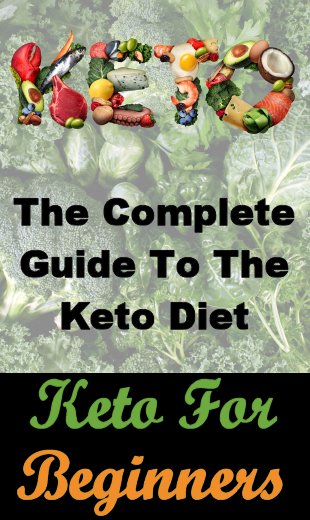12 Reasons You Should Hug More Often
Hugging is one of those activities that humans, on the whole, find comes naturally. (Even other animals hug each other sometimes.)
And while it can be faked, like the Hollywood mwah-mwah pseudo-kiss, a hug is usually something that is genuine, which may be part of why we like it so much.
This article looks at hugging, primarily in terms of its benefits, but I also address those people who do not enjoy or cannot tolerate being hugged (or touched), as well as personal experiences.
Hugging vs. Cuddling
As I see it, hugging is just one form of cuddling.
Both involve two bodies touching each other, usually with arms or hands wrapped around part of the person’s body, but while both show affection, cuddling is a more intimate activity, practised by people who are in love.
Cuddling can take other forms than a simple hug. For example:
- Most hugs are given standing up, whereas cuddling can be done lying down, or sitting on the sofa.
- Hugs usually involve only the hands or arms, whereas cuddling can involve wrapping your legs around your partner too.
- Hugging is usually a two-way activity (i.e. both people are involved), whereas it’s possible for one person to cuddle another without reciprocation (e.g. when your partner is feeling a bit down).
- Hugs are usually somewhat short in duration, whereas cuddling can last a lot longer (and lead to more intimate activities, such as kissing and sex).
In the sections that follow, when I talk about hugging, it is safe to assume I’m also including cuddling too (unless otherwise stated).
Benefits Of Hugging
Apart from the obvious one, that it’s enjoyable (for most people at least – see below for more on this), there are several other benefits of hugging, including:
- Bonding. Hugging increases levels of oxytocin, which is also known as the love hormone. Studies have shown that couples who hug frequently are happier, healthier, and suffer less stress (see below).
- Cardiovascular Health. Since hugging can reduce stress and lower blood pressure (see below), that implies it can decrease the risk of certain heart problems.
- Communication. Sometimes, when we are at a loss for words, a hug can say all that needs to be said. It lets somebody else know that you’re thinking about them, that you care for them, and that they mean a lot to you.
- Connection. Hugging somebody else can help you feel less isolated and more connected. Prolonged isolation can be bad for you, and lead to issues such as depression, but a hug can help reduce those feelings of loneliness – which is why oxytocin is also sometimes known as the social hormone.
- Conflict Resolution. If you and your partner or friend have a disagreement about something, research has shown that it’s helpful to have a hug before parting, as this reduces any negative feelings you may otherwise walk away with.
- Happiness. For most people, being hugged makes you feel happier than you were before the hug.
- Immune System Boost. Studies have shown that hugging can help boost your immune system, reducing, for example, the frequency of colds.
- Improved Sleep. Since oxytocin helps you relax and calm down, that translates to better sleep.
- Pain Relief. Another benefit of oxytocin is that it helps block pain signals. It is also believed that a hug, which applies pressure, works in the same way that rubbing an injured body part does, which some say is explained by the Gate Theory of Pain.
- Parental Bonding. People who hug their babies frequently find that they feel more in tune with their infant’s needs. This works for the mother, who often feels less sad or stressed, and for the father, who can feel more involved in their child’s development. And, not surprisingly, it works for the newborn too, helping them relax and sleep better, cry less, and, according to some, breastfeed sooner. It also leads to better emotional health and builds their sense of self-esteem. Studies even show that underweight babies have a better survival rate if they are hugged.
- Performance Boost. Studies have been conducted that show athletes who demonstrate physical camaraderie, such as hugging, perform better than those who don’t.
- Stress Relief. Another result of increased oxytocin levels is that it helps you to calm down, lower your blood pressure, and even reduce levels of cortisol, the “stress hormone”.
What About Hugging Non-Humans?
There are three main non-humans that some people hug:
- Pets. In most cases, people hug their dogs, since cats are typically not that keen on this sort of contact. Many of the benefits listed above still apply, but maybe only to the human.
That’s because not all animals like being hugged, even though they may let you do it. For example, they may give you what’s called the “whale eyes”, which is when a dog may tilt his head away from you, but still look at you, exposing the whites of his eyes.
- Toys. Most children have at least one teddy bear during their formative years, but recent studies have shown that hugging a human-shaped cushion that contains a phone, via which you can talk to your partner, also offers many of the same benefits as an actual hug with them, including reduced stress levels. Further research is being conducted to determine whether this may be a way of helping to better relieve anxiety and stress in both children and adults.
- Trees. Being called a “tree-hugger” is usually a derogatory term that refers back to the days of hippies, but surprisingly, scientific studies have shown that hugging trees (or even being near one) does have benefits.
In Japan, they practise shinrin-yoku, which roughly translates as “forest bathing”, in which walks in nature (and forests, especially) are prescribed for good health.
Interacting with plants (including trees) can improve your mood, boost your cognitive abilities, and increase creativity.
But what about hugging trees?
Well, there are studies that show contact with the tree’s different vibrational energy can have positive effects on the human body.
I’ll close this section with an interesting video that features the Singing Plants at Damanhur:
How Often Should You Hug?
One psychotherapist, Virginia Satir, is reported as saying, “We need four hugs a day for survival. We need eight hugs a day for maintenance. We need 12 hugs a day for growth.”
I’m not sure you can really put precise numbers on hugging, but given the way society is structured these days, I suspect most people probably need more hugs than they’re getting – and I’m not aware that you can overdose on hugging, so in my opinion, the more the merrier!
In some ways, it’s the duration of the hug that’s crucial – it is recommended they should last at least 20 seconds to accrue maximum benefit.
What About People Who Don’t Like Being Touched?
Yes, there are people who simply do not like being touched, never mind being hugged.
I have met a few women who disliked intensely being hugged by people they didn’t include in their “inner circle”, because they felt it was too aggressive and almost a form of assault.
This dislike of being touched is often the case with people who are autistic, and perhaps counter-intuitively, it seems that a light touch can be more unpleasant than a stronger one.
For those of you who have watched the wonder movie about Temple Grandin, you may recall she built herself a “hugging machine” when she went to college, because it calmed her down.
This same principle is behind the use of weighted blankets and weighted vests, which can help people who are anxious sleep better.
And in many cases, the desire or need not to be touched can manifest itself in other ways, including:
- Not liking to have their hair brushed or combed.
- Resisting having their teeth brushed.
- Sensitivities to foods with certain textures. For example, I really struggle with foods that are between liquid and solid, with what I call squidgy textures such as oatmeal and mayonnaise.
- Wanting the tags cut out of their clothes.
Some of these can be part of a much broader issue, which is usually referred to as Sensory Processing Disorder (SPD).
So, even though hugging is a socially acceptable way of touching others, in many situations at least, you need to be aware that not everybody likes it, which means you need to accept that and back off.
We all have our own definition of the size of our personal space bubble, and how close people can come without us feeling uncomfortable – it’s simply that, for some people, that bubble does not exist at all..
You can offer another form of contact, such as a handshake, or ask them what they prefer. That way, there’s no doubt or guessing.
Professional Huggers
Yes, you can now hire a professional hugger (sometimes known as a cuddlist), who will hug you.
This way, you can obtain some of the benefits of hugging, but not the bonding ones, of course), in a safe and professional environment.
They have strict codes of conduct, because this is definitely not a sexual service – it is usually offered as a healing modality. Some of the more common restrictions include no exchange of bodily fluids (e.g. no kissing), no hand to genitals or breasts, and specific clothing requirements.
Since my wife died just before Christmas 2019, it’s a service I would certainly consider using, if there were anybody in my area.
My Experience
As I have written about elsewhere, my father was ill-equipped when it came to being a parent – he didn’t know what to do with me, and physical contact was rare.
I suspect my mother probably hugged me quite a bit, but I really couldn’t say for certain, and the same goes for other members of my relatively small family (e.g. grandparents, aunts, and uncles).
In fact, in my family, females outnumbered the men by a substantial amount, and I don’t actually remember any of the males hugging me – ever.
As I grew older, I found that hugging was “my thing” (i.e. I like being hugged and I like hugging others), and I’ve even been told I’m good at it. (This was said by a lady who was somewhat tipsy and in tears because her boyfriend had just refused to come and pick her up from the nightclub we were at, so I take her comment with a pinch of salt, although I have had similar things said by people who were more stable at the time.)
Having said that, I am still less keen on other forms of contact from people I don’t know that well, and that includes handshakes and when people feel like they have to put their hand on your shoulder or give you a pat on the back. It feels invasive to me, and while I typically don’t say anything, it does make me feel uncomfortable.
Coincident with all of this is the fact that I am not a people person, I find it hard to read the signals they give off, and I’m an introvert for the most part. I live life pretty much as a hermit these days (which doesn’t bother me most of the time), and having to re-integrate with society would be difficult for me after having lived this lifestyle for over a decade.
Is any of this connected with a lack of hugs when I was young?
Who knows, is the honest answer. It’s certainly possible, but there are so many other potential factors that I’ll never be sure.
I do suspect that lack of demonstrable affection as a child (and I include not being hugged in this, of course), can affect your emotional development, and I wouldn’t be surprised if more studies come out that support this.
And in some ways, it doesn’t matter now. I am who I am, and I currently live by myself and never go out, so it’s pretty much a non-issue these days. It’s just that there are times when I could really do with a good hug – but for now, my dogs will have to suffice.
Conclusion
Who knew hugging could be such a large and interesting subject?
Even though I’m not a people person, I get that feeling connected is important to most of us, and I know that hugging can be a great way to feel close to another human.
And if I were a parent, which has never been my desire and which is extremely unlikely now, I would definitely want to show affection as much as I could.
But my advice to anybody reading this would be to make sure you hug the people close to you (and maybe a few who aren’t) as often as you can – both for your benefit and theirs.
Additional Resources
These are suggestions for those who wish to delve deeper into any of the above:
- Blinded By Science
- Find A Cuddlist
- Temple Grandin
- The Invisible Rainbow
- The Secret Life Of Plants
- Weighted Blankets







